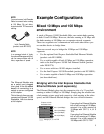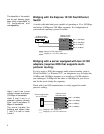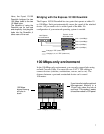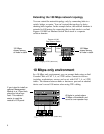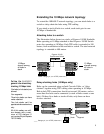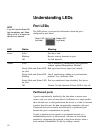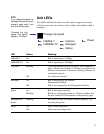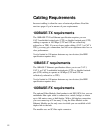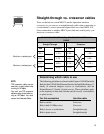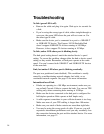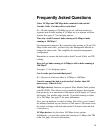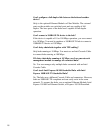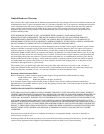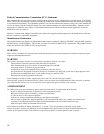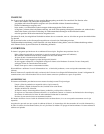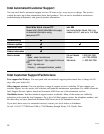15
Frequently Asked Questions
I have 10 Mbps and 100 Mbps hubs connected with an Intel
Cascade Cable. Can they talk to each other?
No. All hubs running at 100 Mbps are in one collision domain (or
segment) and all hubs running at 10 Mbps are in a separate collision
domain. See pages 5-7 for bridging options.
Then why would I connect hubs running at 10 Mbps to hubs
running at 100 Mbps?
For management purposes. By connecting hubs running at 10 and 100
Mbps in the same stack, you need only one Management Module to
manage the entire stack. This simplifies the network management
configuration.
Remember to connect the hubs with an Intel Cascade Cable, not TPE
cabling.
How do I get hubs running at 10 Mbps to talk to hubs running at
100 Mbps?
See pages 5-7 for bridging options.
Can I set the speed on individual ports?
No. All ports on a hub run either at 10 Mbps or 100 Mbps.
I need to connect the hub to a device that’s farther than 100
meters away. What do I do?
100 Mbps devices: Purchase an optional Fiber Module (Intel product
code EE110FX). This allows you to extend the distance between the
hub and device to a maximum of 160 meters at half-duplex or 2 km at
full-duplex. The module plugs into the 12-port hub running at either
10 or 100 Mbps. See page 12 for more information.
Also, you can purchase a switch or bridge. This allows you to extend
the distance between any two devices to 200 meters (100 meters from
the switch or bridge to the hub and another 100 meters from the hub
to the device).
10 Mbps devices: See the above 100 Mbps device options.
Additionally, you can daisy-chain hubs running at 10 Mbps with TPE
cable. See page 9 for more information.



